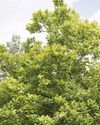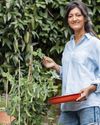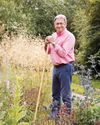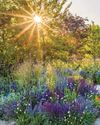
You'll learn about:
✔ Choosing the correct tools for the job
✔ Mastering different methods of pruning
✔ Understanding what to prune when
The kindest cut
Pruning is perhaps the most daunting task facing any gardener novice and enthusiast alike. This is probably because, aside from being seemingly complicated, it is impossible to stick back a part of a plant you wish you had not cut off!
But most mistakes can be rectified by time and if you know why you are pruning a particular tree or shrub before you start, then you can have in your mind a picture of what you are hoping to achieve.
Pruning comes in many forms, from simple deadheading (the removal of faded flowers to brighten up the plant and to prevent unwanted seed production), to clipping topiary specimens to create living garden sculpture, or cutting hard back to encourage more young wood.
Just make sure you are comfortable with your aims before you start and mistakes will be avoided.
What is pruning?
In a nutshell, pruning is the removal of part of a plant to influence its subsequent growth. Woody plants - trees and shrubs - have a clever system of growth. The 'terminal bud' - the bud at the very tip of a shoot - produces growth-inhibiting chemicals, which it passes down the stem to discourage the buds lower down from growing. This makes sure that the plant can grow upwards towards the light, where more food is to be found via photosynthesis.
If we cut off the shoot tip, no growth inhibitors are passed down the stem, with the result that the lower buds begin to grow. This is why we pinch out shoot tips, or cut them off, to encourage bushiness in all kinds of plants.
This story is from the {{IssueName}} edition of {{MagazineName}}.
Start your 7-day Magzter GOLD free trial to access thousands of curated premium stories, and 9,000+ magazines and newspapers.
Already a subscriber ? Sign In
This story is from the {{IssueName}} edition of {{MagazineName}}.
Start your 7-day Magzter GOLD free trial to access thousands of curated premium stories, and 9,000+ magazines and newspapers.
Already a subscriber? Sign In

A new plot for tasty crops
Taking on a new allotment needn't be hard work. By simply following a few easy tips you can have bumper crops in no time, just like Alessandro Vitale

We love July
July is an island floating between the joy of June and the slightly fatigued month of August. It's a grown-up month: the year has shrugged off its adolescent exuberances, the weather is (hopefully) warm enough for ice cream to be one of your five a day, the sea should be swimmable without (too much) danger of hypothermia and thoughts will be of holiday shenanigans and family barbecues. School's out this month, the next tranche of glorious summer colour is washing across our borders and it's my birthday. Lots of reasons to give three rousing cheers for July!

YOUR PRUNING MONTH
Now, at the height of summer, Frances Tophill shows how to boost your plants' health and productivity with a timely cut

Hassle-free harvests
Flowers are out in abundance this month and for Jack Wallington, many of these blooms make delicious, low-effort pickings

Bite-sized bounties
Glorious doorstep harvests can easily turn into gluts, so let Rukmini Iyer's recipes help you savour every last bit

Upcycled outdoor living
Create unique and stylish garden features for minimal cost using reclaimed materials and simple DIY skills. Helen Riches shares four step-by-step projects and more inspiring eco tips

Secrets of a COLOURFUL GARDEN
Buildings and landscapes can play a vital role in supercharging your space, as Nick Bailey demonstrates

Greening up a city balcony
Looking for sustainable, small-space gardening ideas? Take inspiration from Oliver Hymans' transformed balcony garden in north-east London - now a lush, green haven for humans and wildlife

The dry and mighty garden
As we adapt our gardens to a more volatile climate, Alan Titchmarsh reveals how to create a drought-tolerant plot and picks his top plant performers

Nature knows best
Carol Klein explains how to choose plants for specific growing conditions, based on what has naturally adapted to thrive there